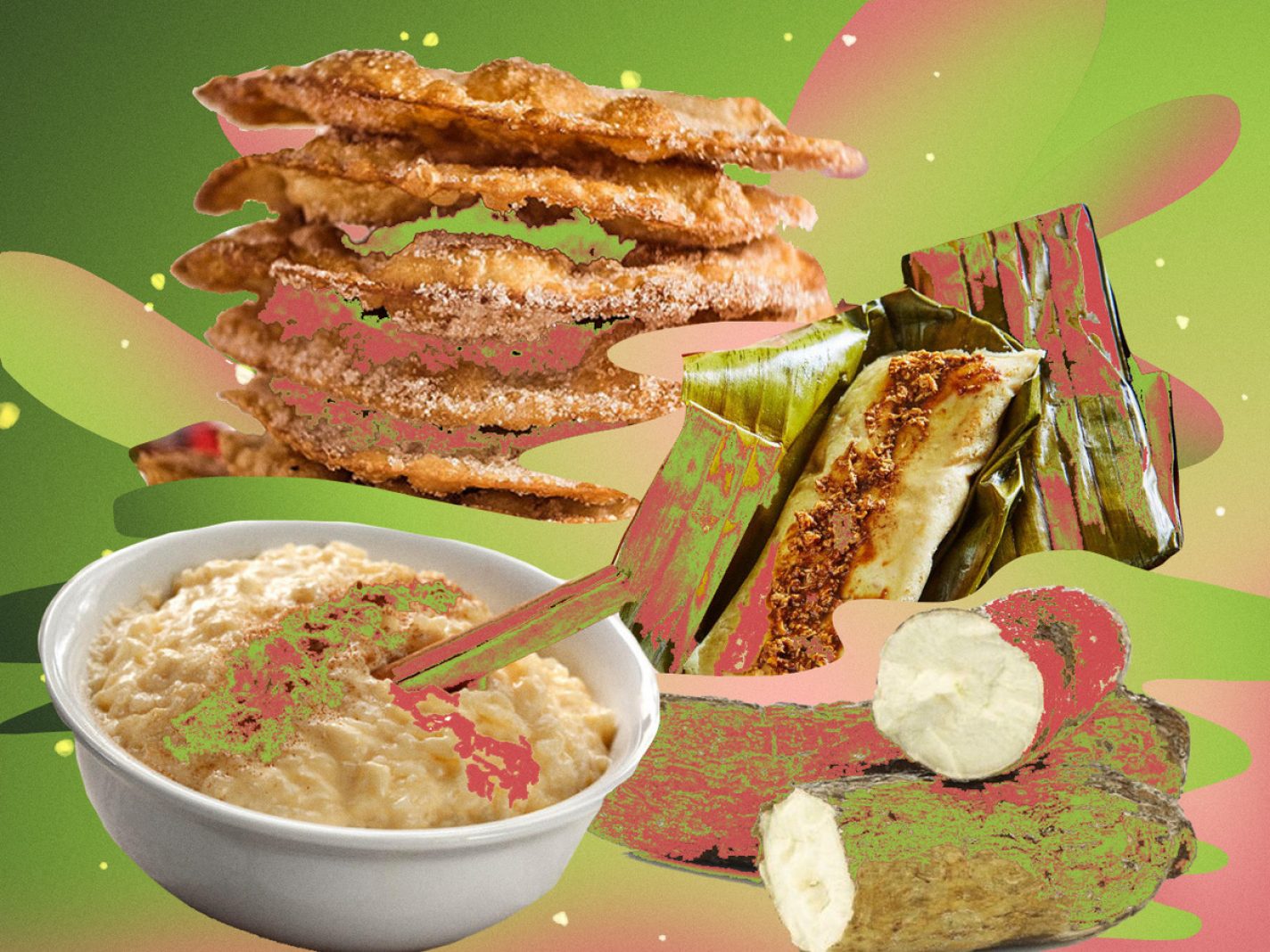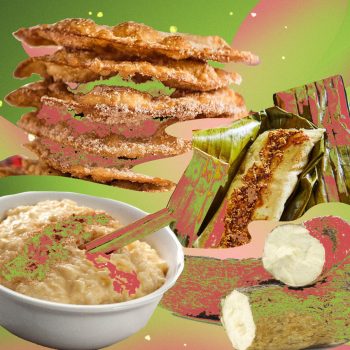Part of enjoying the holidays means indulging in traditional dishes that it turns out may be centuries old. Staple Latin American dishes like tamales and buñuelos are so integral to the holidays but the ancestral history is not necessarily common knowledge. Though the recipes may have evolved, the original dish has carried over for generations and represents a token of the history of Latin America over the ages. Read on to discover the roots of some of your favorite holiday meals.
Tamales
Tamales can be traced back to 8,000 BC in prehistoric Mesoamerica with ties to the Olmecs and the Toltecs who came before the Aztecs and Mayans. So that dish your mami and abuelta spend days making is about 10,000 years old. The corn base has always been used, but Indigenous people used the ancestor of maize known as wild “teocintle,” according to History.com. According to the outlet, that was the name given to the maize god by the Aztecs and other indigenous civilizations also identified people with corn in origin mythologies. The Spanish word “tamale” comes from “tamalii” used in the Nahuatl language spoken by the Aztecs. Before the Spanish conquest the fillings included turkey, fish, tomato, squash, and following the conquest chicken and beef dominated with additions like onion, garlic, and olives according to Mexican scholar and writer Claudia Alarcón.
Yuca
Yuca is a root vegetable with a long history in Mexico, Central America and Brazil, going as far back 3000 B.C. In Colombia there’s the enyucado (croquettes with meat and/or cheese), in Brazil they eat vaca atolada (beef rib stew with yuca), and cassava bread and yuca empanadas are common throughout LATAM. According to a Tupi legend from the Amazon, a mother with no food watched her child starve and when he died, she buried him under her hut. That night, a wood spirit known as “mani” came and transformed the child’s body into mani-oca (oca meaning “root”) which would go on to feed generations.
Arroz con Leche
Arroz con leche’s history is rooted in colonization starting with the Moors invasion of the Iberian Peninsula (including modern-day Spain) in 711. The rice pudding mixture with flavors including cinnamon are early indications of the Arabic influence. The Spanish then brought arroz con leche to Latin America and the popular dessert has essentially the same base: milk, sugar, rice, and citrus. Variations highlight popular flavors of LATAM like the coconut milk in the Puerto Rican version, chocolate in Mexico’s pudding, and coffee in Colombia’s version.
Buñuelos
Buñuelos are also a popular dessert with origins in the Iberian Peninsula with elements of Arabic culture that eventually made its way to Latin America by way of the Spanish. They are believed to have originated among the Morisco people, former Muslims who were forced by the Spanish to convert to Christianity. The standard recipe is commonly a wheat-based yeast dough with anise and fried with sugar and can be stuffed with cheese or yams. In Oaxaca, Mexico, New Year’s Eve buñuelos are served on thin china plates that are smashed on the wall or ground as you make a wish for the new year.




